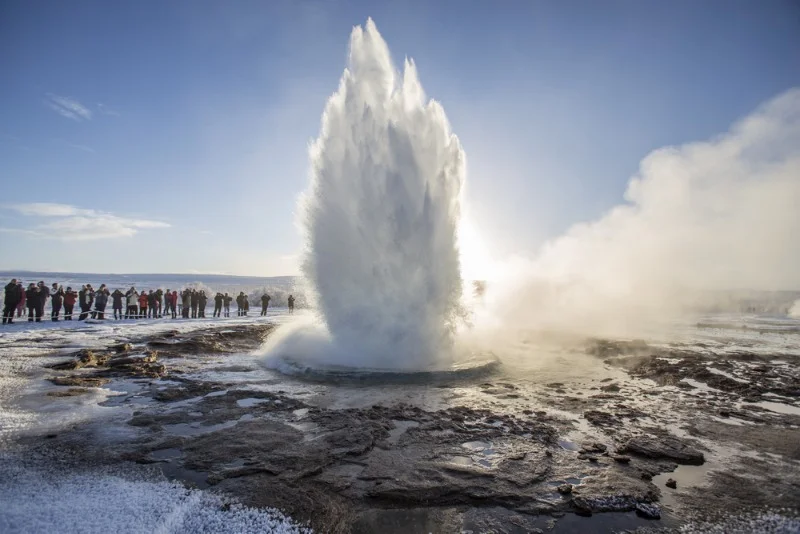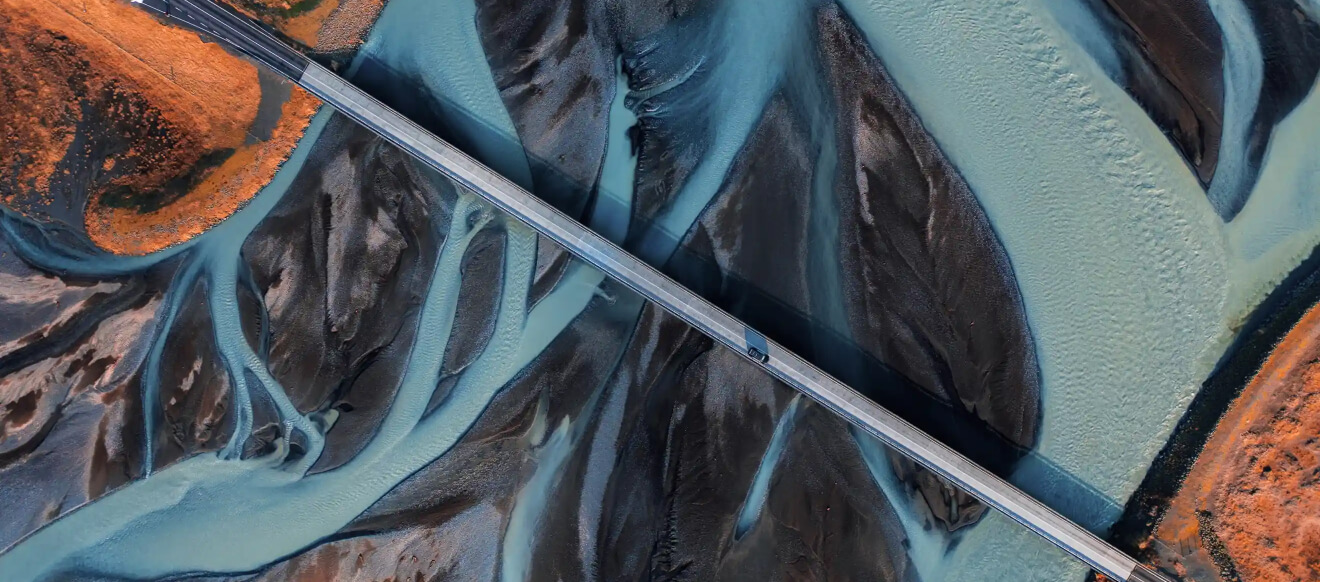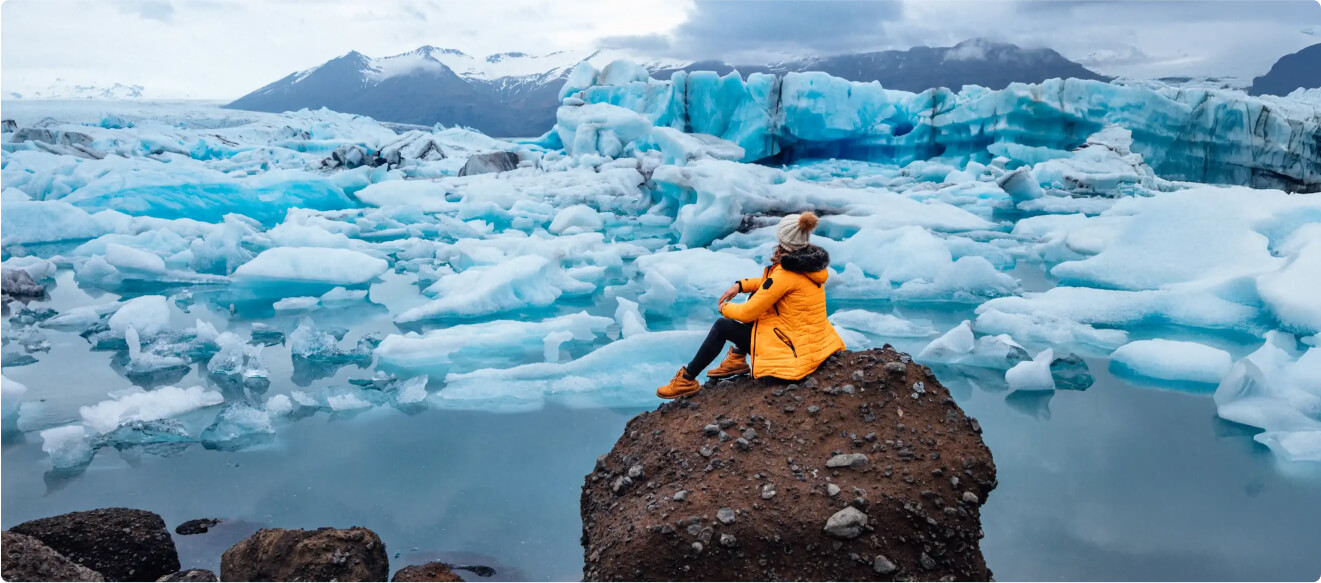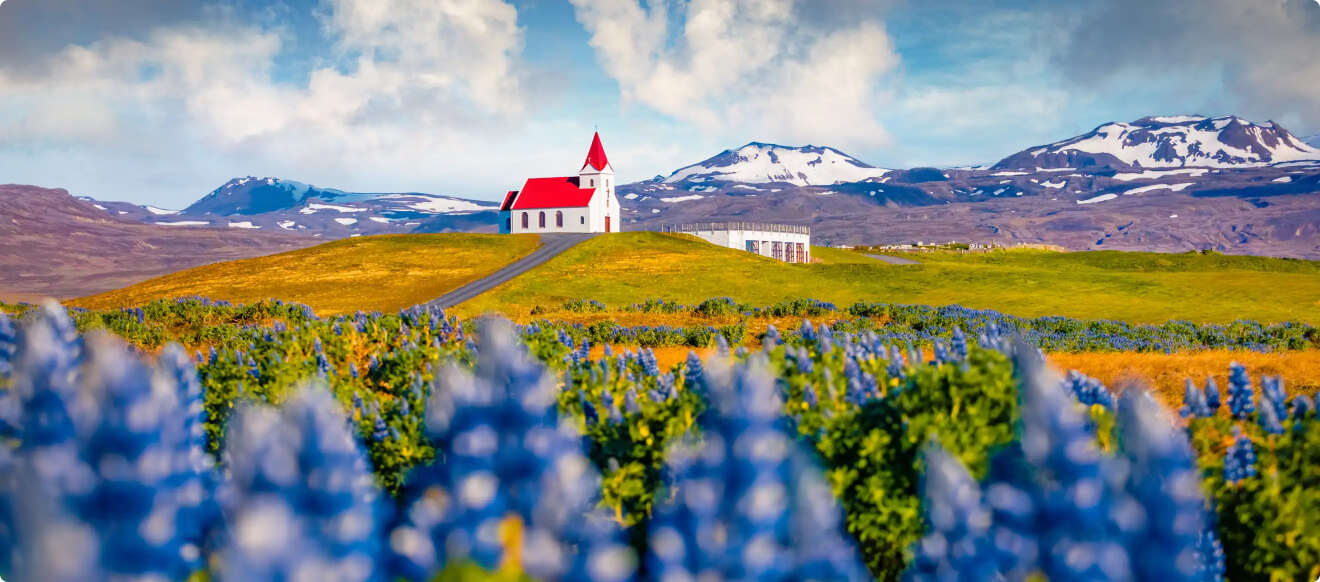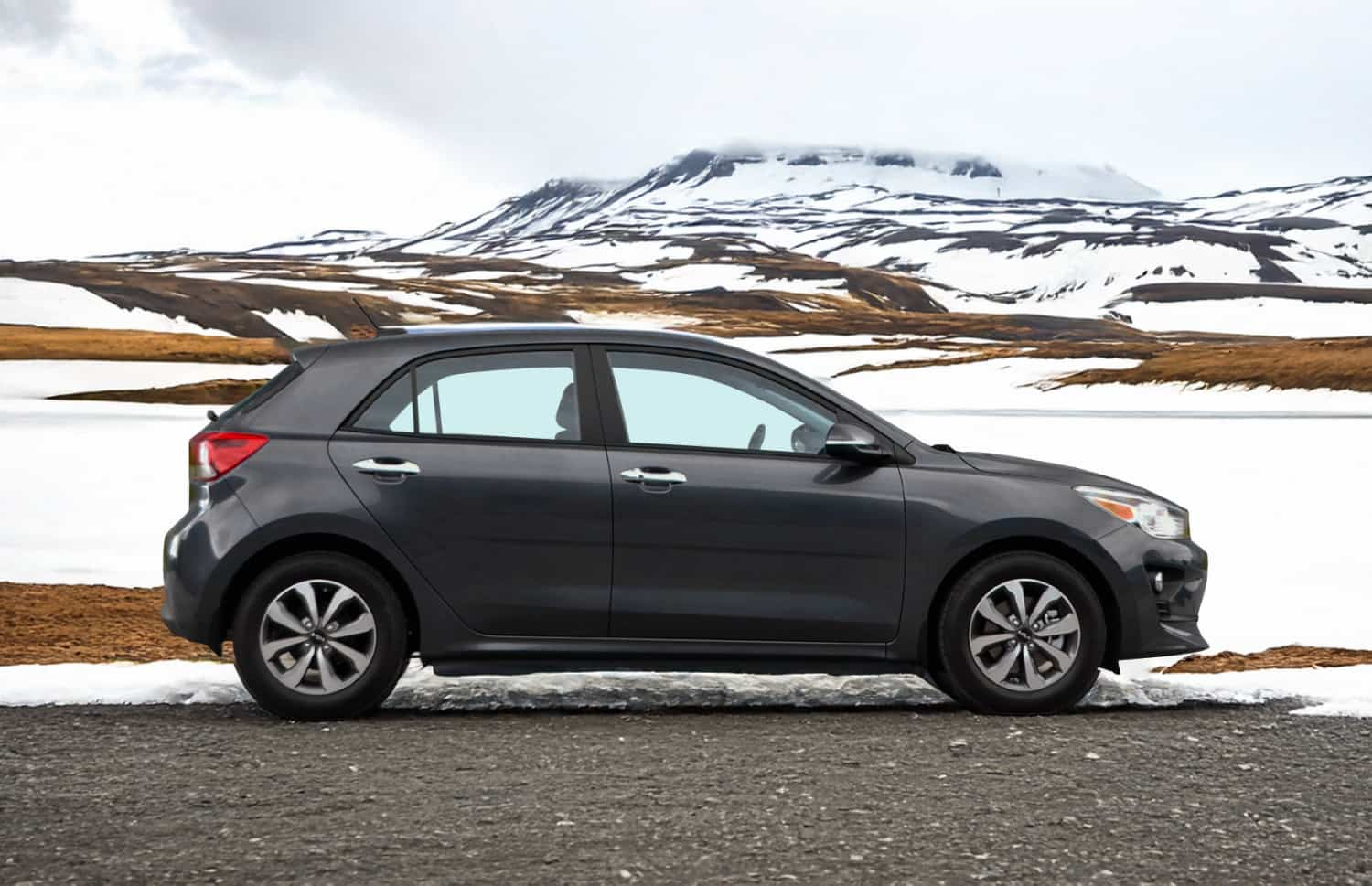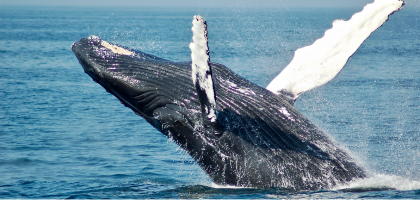Surely any English speaker out there has heard the word “Geyser” at least once in their lifetime. However, I bet none of them know the name is a direct loan from the Icelandic language, and that is not a coincidence. Well, what we do know is this Atlantic nation is full of wonders. From magnificent waterfalls to mighty volcanoes. Now, an Iceland geyser is another thing we need to add to the extensive list of natural marvels. But what is a geyser exactly?
What Is a Geyser?
A geyser is an opening in the Earth's crust from which steam, gases, and boiling water flow intermittently and generally, in a very rough way. The water expelled by geysers comes directly from underground wells.
In Icelandic, the word is spelled “Geysir” from the Old Norse verb “geysa,” which means “to gush.” The Icelandic language has its origins in the old Norse; the language Vikings used to speak. As you can see, the word could not be any more descriptive and precise for this incredible natural formations. The fact that we adopted an Icelandic name is not just a mere eventuality.
Geysers form in unique places only, where there is a mix between geothermal activity and water accumulation underground. For water to shoot out of the ground, it needs to be very hot in the first place. Magma or lava heats the water accumulated in big subterranean pools, causing it to boil. And all that heat energy increases rapidly, creating more and more pressure that needs to be released somehow. Boiling water then rises to a higher ground level, and once it finds any crack on the surface, it burst out in a prominent spout. There are only a handful of places on earth with the required conditions for geysers to erupt. And one of those places is Iceland.
Geysers in Iceland: Top Facts and Where to Find Them
Iceland’s geysers are extremely rare. These formations only happen in five countries around the globe! And in the land of fire and ice, we are lucky enough to have several of them.
This Nordic island is located right in the middle of two tectonic plates: the Eurasian and the North American tectonic plate. Turbulent interactions formed Iceland, and the geothermal field below our feet keeps on creating astonishing things. These divergent boundaries can be seen in the Thingvellir National Park, which is part of the famous Golden Circle route. So, for those looking for geysers, hot springs, and geothermal activity, this is the perfect route to do!
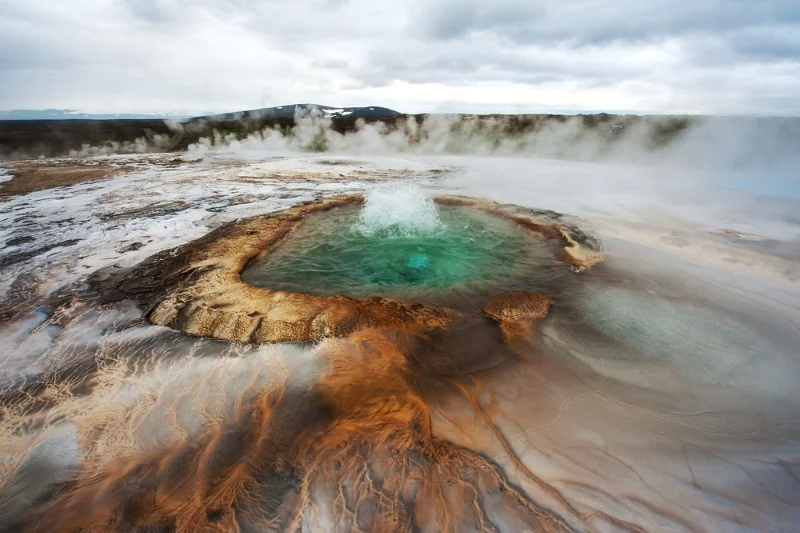
The Golden Circle is a route of approximately 300 kilometers (186 miles) with one of Iceland’s most visited landmarks. The itinerary is in South Iceland, and anyone can easily reach the area directly from Reykjavik. You can simply rent a car in Iceland and head there to discover Gullfoss waterfall, Geysir geothermal area, and the mentioned Thingvellir National Park. There are also several Golden Circle tours in Iceland, so in case you cannot drive, just check with an agency as they will, for sure, have this destination in their catalog.
The Great Geysir
Geysir, also known as The Great Geysir, was the first to be discovered by the Europeans and is perhaps one of the most famous ones. It is the last stop on the Golden Circle route. This water beast can eject hot water up to 70 meters (230ft) in the air. Impressive, isn’t it? However, is it important not to cross the security line, as the water has a temperature ranging from 80-100 degrees Celsius (176-212F).
The Great Geysir has been around for centuries. However, it is no longer as active as it used to be. The last time it expelled water was back in the year 2000. That water eruption was so intense, it created an earthquake in the area, and the stream reached 122 meters (400 ft) in the air. Do not be disappointed yet; you can still experience what it is like to see an active geyser; instead, you can contemplate the extraordinary Strokkur geyser!
Where is the Strokkur Geyser in Iceland?
The Strokkur geyser or Strokkur Geysir, however you want to call it, is in the same area the Great Geyser is. This geothermal field is known as Haukadalur valley, and it is home to several geothermal features such as fumaroles and bubbling mud pools. Strokkur is right beside the Hvítá River, and It is one of Iceland's most famous geysers, erupting about every 8-10 minutes, 15 – 20 m high (49-65ft), sometimes up to 40 m high (131ft). Back in the 19th century, it used to be way more powerful, columns of water would rise to 60 meters (200ft). Despite this, Strokkur is still a potent water beast, so the show is guaranteed. Its name means “churn” in Icelandic, and it is indeed a very restless geyser.
Be aware of the wind; depending on the directing it is blowing, vapors and water may head in a different direction. The water temperature is scorching, and it can be quite dangerous. Do keep a safe distance!
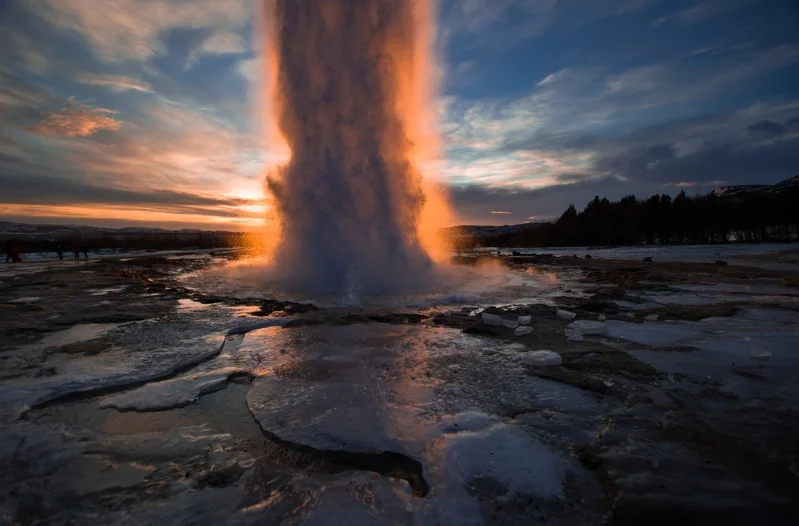
Icelandic Geysers: the Power of Nature
Haukadalur Valley and all of these geysers are close to the capital. You can easily plan a day trip from Reykjavík directly to the area to see mother nature in all its splendor. You can also add an extra stop at the Secret Lagoon, a natural hot spring area close to the Golden Circle in a small village called Fluðir.
As you can see, Iceland never ceases to amaze us. The Northern lights, the mighty waterfalls, the imposing volcanos, …etc. The land of fire and ice is a box full of surprises for whoever wishes to experience nature at its best.




